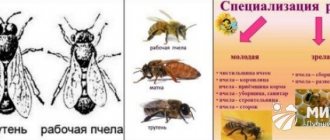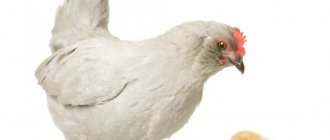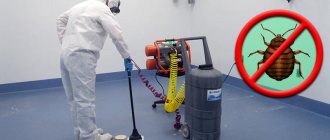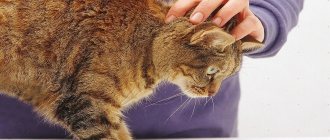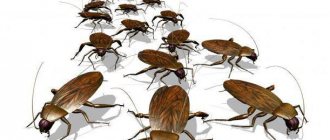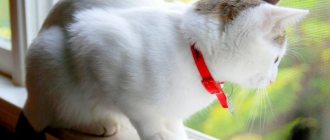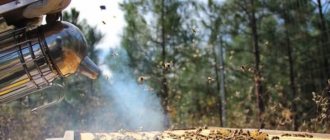Content
Despite the unpretentiousness of the Buckfast breed, individuals require a certain attitude and care.
Nutrition
Early development of insects is good only in cases where the region can provide sufficient food for bees from the first spring months. Otherwise (for example, in the northern, western regions), the beekeeper will have to take care of the workers by providing additional feeding.
What Buckfast is particularly demanding about is space. The breed requires large, spacious hives to live in.
Without a large “living space,” the family will not be able to constantly increase the number of individuals and increase strength, and the amount of honey produced by Buckfast bees directly depends on these two factors. A separate hive is desirable for each family.
In addition, hives for the Buckfast breed must be warm. If bees are bred in northern regions, it is strongly recommended to insulate them.
Wintering
Shortly before the last pumping, all the buildings are removed from the hives, the frames in the lower ones are rearranged, supplying frames with sushi and foundation to provide the queen with work.
This is done so early due to the characteristics of the Buckfast breed - unlike other breeds, Buckfast bees do not fill the lower body with honey, but lift it up, providing the queen with a body for sowing.
At the same time, the bees begin feeding, preparing them for winter. Feeding is carried out until the bees begin to refuse it. Nuclei are fed in the same way.
Another important nuance in preparing Buckfast bees for winter is removing the insulation from the hive in mid-autumn (depending on the temperature) before the onset of frost. This is done so that the bees have time to sink to the bottom before wintering.
The resulting bee club of sorts will perfectly maintain its internal temperature throughout the winter. In addition, removing the insulation from the hive in the autumn, right up to frost, will protect the hive from increased dampness of the pillows and mold.
Fears that Buckfast bees will freeze or get sick if insulation is removed in the fall are completely unfounded. Bees tolerate low temperatures well. The main thing is to make sure that hives with bees of this breed will not be left without protection in the cold.
Diseases
Buckfast bees are resistant to infectious bee diseases such as:
- acarapidosis;
- nosematosis;
- ascospherosis.
However, at the same time they are vulnerable to:
- varroa mite;
- European foulbrood;
- American foulbrood;
- tracheal mite.
In this regard, the beekeeper is required to carry out regular preventive measures (especially in the process of preparing the breed for wintering).
Other care features
The Buckfast breed has virtually no resistance to preserving its own natural characteristics: no matter how high-quality and clean the acquired Buckfast uterus is, after a couple of generations the individuals invariably change color and acquire aggressive habits.
To maintain the purity of the breed of existing individuals, it will be necessary to either purchase new queens or use artificial breeding methods, limiting the contact of individuals with other representatives of the bee family.
The nuances of planting and replacing the uterus
Old queens are not particularly active, so if they are left in the hive, the fertility and productivity of the colony will be reduced. In addition, this can provoke the development of diseases and problems with wintering. Therefore, after some time, a new queen comes in.
Experienced beekeepers begin replacing the queen in the spring or early summer, when there are many young individuals in the hive who quickly get used to the new chapter. Replanting is not prohibited in August and September, when the bees are calm.
Before adding a new queen, you need to remove the old one and remove the honeycombs with brood. The process is easier in smaller hives.
Advantages of Buckfast bees
As mentioned above, this breed is in great demand among beekeeping enthusiasts. There is a completely reasonable explanation for this, because the qualities that these stinging insects are endowed with are worthy of praise.
The main advantages of Buckfast bees:
- High productivity. The total volume of beekeeping products collected from this species in one honey season exceeds similar indicators from other bees.
- Excellent performance and endurance. They begin to work from the first rays of the sun, finishing collecting pollen at sunset. They leave the apiary even in bad weather, and even if the fog does not clear. Distance is also not a serious obstacle for them.
- Phenomenal olfactory ability and good visual acuity. Buckfast bees are able to smell the scent of their favorite flowering plant from a great distance. They do not get lost in space, perfectly orienting themselves in unfamiliar areas.
- They have a calm and peaceful disposition. They do not experience serious irritation due to intrusion into their domain, which allows them to collect honey without smoke support.
- Extreme degree of cleanliness. They constantly monitor the cleanliness of their nests, avoiding the slightest contamination.
- Resistance to diseases. High threshold of resistance to axopherosis, acarpidosis, nosematosis.
- High level of reproductive capacity of the Buckfast queen bee. She lays eggs uninterruptedly, thereby ensuring regular replenishment of the colony.
- Active throughout the season.
- Unpretentiousness. No special conditions are required for breeding this species.
Features of reproduction and breeding
In order for the bees to feel comfortable inside the hive, develop normally and maintain high productivity, it is necessary to provide them with natural conditions similar to their natural habitat. Due to early activity, beekeepers begin expanding hives in early spring.
But before you start breeding bees of the Karnika breed, you need to check with the owner of the breeding farm in what conditions he kept the parent insects. If any deviations or errors in care were made, individuals may lose their characteristic features.
The bee package package includes:
- 3 + 1 Dadan frames.
- Bee family.
- A young queen up to 1 year old with a mark on her back.
- Liquid in the drinking bowl.
- Food (1.5 kg of Kandy mixture).
- Package.
Starting in early spring, insects develop intensively, and already in June one family occupies about 3-4 buildings. Drones of the Italian variety are planted with the queen. In the event of a return cold snap, the intensity of brood production does not decrease, even if there is little pollen and nectar. Insects continue to fly around even at a temperature of +10°C.
During the winter period, the family loses a large number of flying individuals, so they are soon replaced by young animals. If the cold weather is prolonged, the breeding cycle may begin later, so the productivity of the swarm will remain low until the start of the main honey flow. The comfortable temperature regime inside the hive for the development of offspring is +32…+35°C.
Description
There are no clear external distinguishing features for “buckfast” bees. Within the species, many lines have been bred, the individuals of which differ from each other. Color varies from brown to gray (“Elgon”). The legs are black, the wings are cream-colored. The long, narrow body is covered with pubescence. The proboscis is medium in size - from 6.5 to 6.8 mm. Buckfast worker bees weigh 115 mg. The weight of the barren uterus is 190, the weight of the fetal uterus is 210.
Features of the uterus
The queen is valued for her fertility. It is capable of sowing up to 2 thousand cells per day. By the time of the main bribe, a large family has grown. Up to 30 frames fit tightly. There is brood until autumn. Under favorable conditions it may be in September.
The uterus has a long service life. Beekeepers note the presence of females that are already 5 years old or more. They give dense sowing in a square. They work no worse than young people.
Family behavior
“Buckfast” always surprises with its productivity and endurance during honey collection. Families grow very quickly. The period of active growth depends on the line. There are hybrids for autumn harvest, and there are hybrids for early spring harvest.
Bees fill only the upper part with honey. They leave the lower body to the “queen” for sowing.
Insects are very neat. The bottom of the hive is always clean.
What do buckfast uteri look like?
In the photo there is a buckfast queen, she is much larger than worker bees, the aircraft is less developed. It has a lighter color, a long abdomen, a light brown color, and a yellow tint that is much greater than that of working individuals. A young unfertilized individual is capable of flying out of the hive. During the reproduction process, the queen does not leave the hive and does not rise up. Does not leave the frame until it is completely filled.
Laying continues throughout the year. The queen bee buckfast builds a nest only on the lower tiers of the hive; the nest is small and compact. The reproductive process continues throughout the day, the queen lays up to 2 thousand eggs.
Attention ! The family is constantly growing and requires a larger hive and a constant supply of empty frames.
Close-up view of queen bee
Maturation of uterine eggs
Marking the queen bee
Queen mother of the bee family
to obtain a buckfast queen bee from brood . Out of a thousand young individuals, about 20 will be used for breeding, preserving the genetic characteristics of the buckfast, and then with the condition that the drone will be purebred. Therefore, the price offer for bee packages with Buckfast is high. Breeding farms involved in breeding this breed are located only in Germany.
I'll add a few thoughts out loud:
This text shows the level of cooperation between scientists, public organizations and sandstones in Switzerland... Level of research and reports. Nobody foams at the mouth to defend one specific bee like ours, in fact, whose reputation is not at the highest level and we have to call everything else whatever and whatever... By the way, please note - line C (Buckfast, Punisher and Ligustiku) is classified as Eastern European bees As can be seen from the presentation slides, genetic studies of Swiss bees have identified Buckfast as a separate breed of bees. Positive results of genetic analysis are noted since the high biodiversity of populations reduces the risks of inbreeding. Colleagues have something to look forward to. Post your thoughts and comments below.
How to choose bees
The type is selected based on the following characteristics:
- level of honey production;
- cold resistance;
- productivity;
- durability;
- peacefulness.
To choose the right breed, it is based on what flowers honey will be collected from. Each species has its own characteristics for collecting nectar - the Caucasian bee is more active in meadows, and the Central Russian one collects only from one flower.
Peacefulness is an important aspect in the choice, as it affects the convenience of collecting honey. The choice also depends on the climate; not all species can survive the cold winter.
Prevalence, diversity and local subspecies of honey bees
Because of this adjustment process, four main evolutionary lines emerged:
- Western honey bee (Apis melifera): line M (west and northern Europe),
- line C (Eastern Europe),
- line B (Middle East and Central Asia)
- and A-line (Africa) .3
The natural habitat of the honey bee thus extends from the southern tip of Africa through savannah, rain forest, desert, the Mediterranean south into Scandinavia.
With such a variety of habitats, climatic conditions, flora and fauna, it is not surprising that numerous subspecies have arisen, each with special properties optimal for their living area. Today there are more than 28 subspecies of honey bees.4
There are four subspecies or breeds of honey bees in Switzerland:
- originally native Dark Honey Bee (Apis MELLIFERA MELLIFERA, short: Mellifera),
- Kärtnerbiene (Apis MELLIFERA Carnica, short: Carnica),
- Italian Bee (Apis MELLIFERA ligustica, short: ligustica)
- and Buckfast-Biene bees Buckfast (hybrid breeding).
Mellifera belongs to the M evolutionary line, while in the Karnika, Ligustika and Buckfast bees a C line can be identified.
The aim of this study was the coverage and current population structure and diversity of Swiss honey bees, as well as the degree of hybridization between different subspecies. Also analyze new genetic markers of Swiss honey bees
Significant difference between lines M and C
Principal component analysis (graphical presentation - Next page below) in which each point is sequenced. Difference between C and M line bees. The first principal component (x-axis) shows that genetic variation within Lines is much less than between M and C lines. this explains >95% of the majority of the variation between bees surveyed. However, the second principal component (y-axis) is determined by other structures. Karnika and Buckfast, as well as Swiss bees from Savoy melifera, are differentiated.
The previous diagram shows the population structure of Swiss honey bees presented in the form of a network. Shown is the relationship for each bee using a cupcake diagram with the colors of the bee's corresponding origin. Connecting lines represent genetic relatedness between solitary bees; the thicker the line, the closer they are connected. From this network structure one can clearly recognize the populations of individual bee breeds. Hybridization Mixed race bees (different colors in the pie chart) are clearly mixed bees of the M and C lines. Analyzes also showed that Buckfast bees are genetically closely related or related to Karnika bees.
In addition, an interesting substructure of connections between French and Swiss mellifera
Genetic analysis of bee breeds Buckfast, Punisher and Melifera
The analysis of each bee is shown as a dot. The color shows the lineage membership according to subspecies or breed. The distance shows the genetic relationships between individual honey bees.
Advantages
Professional beekeepers note the following advantages:
- a lot of pollen;
- bees are not afraid of rain, fog and wind;
- they collect nectar in the fall even at a temperature of +10 degrees, while Carpathian bees sit in their hives in similar weather;
- no mesh or smoker is required during the inspection process;
- the hive and bottom are clean;
- spring flight begins at a temperature of +12 degrees.
The bees place the brood behind the wall, one-day eggs are located on the frames. The nests are unusually clean, and there is economical consumption of food. It is advisable to shorten the nest by 1 frame to insulate it.
When working with such bees, beekeepers made the following conclusions:
- in winter there are no complications with the intestines or disorders;
- resistance to ascospherosis;
- A distinctive feature is a continuous closed brood comb; the queen does not go to neighboring combs until she fills the cells with eggs.
The process of breeding the breed is simple. When the swarming process begins, prepare 3 frames with brood, as well as the mother. The queen is perceived well by other bees. It is easy to breed and keep such bees, as they have many advantages and a minimum of disadvantages.
Characteristics
Performance characteristics are beyond praise. Buckfast bees are not afraid of the cold and can fly out in the spring as early as 12°C. Positive working qualities of bees include a developed sense of smell - bees find honey plants even at a great distance from their “home”. They are hardy and capable of flying long distances in a day. Buckfast produces more honey than other bee breeds.
Nectar collection occurs from early morning until late evening. They easily adapt to adverse weather - rain, wind and fog. This does not stop them from bringing large bribes.
Another remarkable quality of the breed is cleanliness. Beekeepers note that they do not have to constantly clean the bottom of the hive, and in the spring, when the bees fly out after wintering, they leave their home in perfect condition. In general, buckfast bees do not require constant attention and complex care. Even a novice beekeeper can handle their maintenance.
If you carefully monitor the behavior of bees, you can completely avoid buckfast swarming. If the colony does become swarmed, anti-swarm measures will quickly bring it back into working condition. Old queen bees are able to lay eggs for a long time.
Brood is usually deposited in the lower part of the hive, and Buckfast queens do not move to other combs until they have filled all those available on the frame. The queen worms constantly, until late autumn, so there is never a danger of weakening the colony and reducing the population. Bee bread and honey are collected in separate frames above the combs with brood. Bees hardly produce propolis.
Another important advantage of the breed is its resistance to diseases such as ascopherosis, acarapidosis, nosematosis and other infections. They may suffer from varroa, but timely preventive and therapeutic measures help maintain strong families
Description and characteristics of the Buckfast bee breed
For a thousand years in England there has been a Catholic monastery called Buckfast. What does this have to do with bees? This place is their homeland. At the age of 17, brother Adam (Karl Kerle) worked as a pasik on the grounds of the abbey. At this time, the English dark bees were being destroyed by the tracheal mite. To preserve the apiary, the abbey purchased bees of the Italian breed. Subsequently, only a cross between Italian and local bees survived the winter. This is how a new breed of buckfast bees was developed, resistant to the tracheal mite. In the middle of the 20th century, bees were first brought to Europe. So buckfasts mixed with local insects, and along with their numbers, their prevalence among beekeepers increased. Over the course of many years, the artificially created breed did not lose its “character”, but only improved.
- The popularity of buckfast dogs is absolutely justified: they are highly productive, resistant to diseases, clean, unpretentious, peaceful, and most importantly, real hard workers!
- Buckfasts' sense of smell is phenomenal; they can smell the scent of a flower at a long distance.
Appearance
Buckfast bees have inherited external characteristics from their “parents”. The color of the insects turned out to be a little darker than that of the Italians, but retained a reddish tint. Their body shape is regular, oblong, elongated. The legs of buckfasts are glossy black, and the wings are light with a brown tint. The hairiness of the bees is average, the proboscis is of medium length. In terms of external characteristics, the subspecies are practically the same; they have different functional purposes.
Productive Features
- The total volume of beekeeping products collected from buckfasts in one season exceeds similar indicators from other bees.
- Buckfast queens are very fertile and in May can sow about two thousand cells per day. By the time of the main honey collection, the breed forms large families.
- In addition, the Buckfast breed is distinguished by its continuous honeycomb closed brood.
- In general, buckfasts are characterized by smooth, slow movements. Their activity manifests itself when collecting nectar, due to this the breed is one of the most productive.
- Long service life of queens that remain functional throughout their lives.
- Migrating can significantly increase the productivity of this breed.
- Each honey frame yields approximately two or even more kilograms.
Due to its high performance, buckfast began to be used on an industrial scale.
Behavioral characteristics and climate preferences
The main argument in favor of buckfasts is their peacefulness. Beekeepers fell in love with the character of buckfasts and their non-aggressive behavior. Some beekeepers do without special protection when working with these bees, they are so calm.
When carefully inspecting the hive, the bees do not get excited or alarmed - they calmly go down. The breed willingly cooperates with humans and does not quarrel with its fellow tribesmen. Bees are valued for their cleanliness. The “houses” of insects are in perfect order, since the breed is not inclined to excessively pollute the hive with propolis.
The “houses” of insects are in perfect order, since the breed is not inclined to excessively pollute the hive with propolis.
Buckfast bees are among the most resilient and hardy. They can withstand both heat and frequent precipitation, and can fly long distances.
- Buckfasts adapt to different conditions. They fly out early and collect nectar even in rain, wind or sun.
- However, the most comfortable weather for them is damp, foggy weather, like true British people.
Features of honey collection and swarming
Since Buckfast is an artificially bred breed, all the efforts of breeding science were aimed at developing in bees the qualities required for high productivity of honey collection.
Honey collection process: when collecting nectar, bees easily switch from one plant to another, they do not give preference to one honey plant, and constantly fly from one species to another. In addition, they hear the aroma of a flower from afar and travel long distances to search for food.
- A huge plus: working with buckfast can be done almost without hindrance. After all, they do not have a tendency to swarm, which reduces the labor costs of beekeepers.
- Low swarming means that bees need to be inspected much less frequently, which has a positive effect on honey production.
Characteristics
Effective against other bees
Compared to A. m.
ligustica (to which the Buckfast bee is most closely related), it is more industrious, more thrifty, less prone to swarming and more resistant to diseases, especially Acarine (tracheal mites). Compared to most subspecies of bees, Buckfast bees collect less propolis, remain dormant in the winter but accumulate quickly at the appropriate time in the spring (in England/Northern Europe) and maintain maximum effective colony strength throughout the summer, giving a complete advantage. Buckfast bees are unusually docile and tolerate handling in adverse weather. The pure Buckfast bee will swarm, but it is not prone to this and certainly has a good reputation for its unusual ability to collect honey.
In a scientific study carried out in Poland from 2009 to 2010, economic traits of pure Buckfast bees and hybrid A. m. mellifera
and
A. m.
Caucasia was compared, the Buckfast bee was shown to have a larger brood area, greater growth and strength in growth by spring, and at the last inspection of the year the Buckfast colony was observed to be stronger as well.
Honey extracted in the spring and summer was greater from Buckfast hives, with the total volume of honey extracted being 34.45% greater, with less variation between hives compared to A. m.
mellifera x
caucasia
(NB: crossing two subspecies of bees would result in heterosis, i.e.
A. m. mellifera
x
caucasia
would obtain better results than if only a pure subspecies such as
A. m. mellifera
or
A. m
.caucasia ).
A similar scientific study, also conducted in Poland, but in field and laboratory conditions, compared the ability to collect and accumulate food of three colonies: 1) pure Buckfast, 2) a hybrid A. m. mellifera
(from Norway) x
A. m.
caucasia and 3) hybrid
A. m.
Caucasus x
A. m. karnika
.
The Buckfast colony collected 2.1% less syrup than A. m.
caucasia x
carnica
, but stored 24.8% more in stores, indicating greater processing efficiency and less consumption of collected syrup.
Buckfasts collected and stored 38.2% more syrup than A. m.
mellifera x
caucasia
.
Hybrid vigor for increased yields
Although the pure Buckfast bee claims an unusual ability to collect honey, returns can be maximized through hybrid vigor (heterosis) by crossing the pure Buckfast, usually paternally, with other subspecies. However, according to Brother Adam, not all crosses will produce the desired qualities, often the tendency to swarm increases so much that it affects the honey harvest. The following crosses have been found to produce excellent results without increasing the swarming instinct: A. m.
Anatoliaca
Queen x Buckfast
drones Buckfast Queen x A. m. carnica
or
A. m.
cecropia
drones ;
I am.
cecropia queen x Buckfast or
A. m.
Carnica
drones .
But the following were found to maximize the swarming instinct: A. m.
mellifera or
A. m.
intermissa or
A. m.
carnica queens x drones of buckfast.
Varroa resistance of various Buckfast strains
In a study by Oddie, Dahle and Neumann, the original Norwegian strain Buckfast was found to be resistant to Varroa. In Finland (Lunden apiaries) and Sweden (Österlund apiaries) there are Buckfast varieties that have been confirmed by other breeders to be resistant to Varroa.
Varroa sensitive hygiene
A breeding project was started in the Netherlands in 2014 by Stichting Arista Bee Research with the aim of creating insect-resistant
Varroa bees by using single drone insemination to improve behavior in Varroa sensitive hygiene (VSH) environments.
By importing semen in 2013 from VSH colonies in the US, they were able to work with Buckfast beekeepers from Belgium, Luxembourg, Germany, France and the Netherlands and were able to create colonies that were completely resistant to
Varroa, without the use of any treatments. Although the genetic base of this Buckfast VSH strain is very narrow, since selection was limited to this trait only and there were no resources yet available to integrate it structurally into the wider population, it showed that VSH behavior is present in a European high-quality product. Buckfast breeding stock and can be developed to high percentages, the next step in the breeding program will be further selection to 100% VSH across the entire EU breeding stock. In 2022, it was announced that varroa-resistant Buckfast bees (daughters of the open-mating VSH Queens) would be available for sale in 2022.
Bee breed Buckfast
You can hear a lot of flattering reviews about Buckfast bees. They are very expensive and are valued higher than Italian and Carpathian bees. But what makes them special? Bees of the Buckfast breed are truly considered one of the most productive and peaceful. The article will describe how they appeared, what they look like, and what advantages and disadvantages they have.
How did Buckfast bees originate?
Buckfast bees are an artificial species created by Brother Adam of Buckfast Abbey in England (hence the name). It took approximately 70 years to create this breed. In 1915, Brother Adam came to this abbey and began working there, in the monastery apiary. It was a difficult time for bees. In those years, they suffered greatly from tracheal flare - they died out in swarms. Therefore, brother Adam decided to create a new species that could resist disease, be peaceful and have excellent productivity.
Italian bees were purchased to restore the apiary. After the winter of 1919, several colonies crossed with local bees survived - this was the basis on which the selection of the future species was built. After several years of work, in 1927 the first task was completed - the bees received immunity to the tracheal mite.
Brother Adam of Buckfast Abbey in England
To improve the quality characteristics of bees, Brother Adam began searching for new breeds around the world. In 1960, the blood of Greek bees was mixed into the then Buckfast. This made them resistant to swarming and peaceful. In the early 70s, they were also crossed with the Anatolian bee, and then also with the Egyptian and Macedonian. The result was modern Buckfast bees, known to this day for their excellent qualities.
Description of Buckfast bees
So, what do Buckfast bees look like? The weight of a worker bee is 110-120 mg, an unfertilized queen bee is 190 mg. The body is slightly elongated (longer than that of the Ukrainian Steppe), narrow, slightly pubescent. The color is almost yellow, but darker than that of the Italians, although not brown. It is sometimes characterized as yellow-brown. The legs are black, the wings are light, with a brown tint. The length of the proboscis is 6.5-6.8 mm.
There are three varieties of Buckfast bees based on brood production - early, middle and late. The lines also differ in:
- disease resistance;
- time of scarring of the uterus;
- period of operability - some lines can work until late autumn, while others can work in early spring.
What are the benefits of Buckfast bees?
What kind of Buckfast bees are they? In addition to history and appearance, it is the quality features that are important to beekeepers. The first thing you need to consider is the merits - why are they spoken about so well?
- They don't swarm. If this happens, it is extremely rare and, as a rule, due to improper care.
- They produce a large amount of brood in one season - efficient reproduction of offspring ensures rapid growth of the family. The queen produces up to 2000 eggs per day.
- Queens are very fertile throughout their lives.
- High productivity - a lot of honey is collected per season if you choose the right line.
High productivity - a lot of honey is collected per season
Does the breed have any disadvantages?
Buckfast bees also have many disadvantages, but they are outweighed by their advantages, so they are not particularly taken into account when purchasing a species. And yet the beekeeper must know what he will be dealing with.
- Frost resistance is low. To survive in cold regions, they need proper care and a good hive during the winter.
- Procedures such as dividing families and selecting sealed brood are not used if the beekeeper wants to get a lot of honey per season. This is both good and bad. The negative side is that you have to completely retrain if the beekeeper has previously worked with other bees like Karpatka.
Buckfast is very expensive because the original genetic material has been lost
Buckfast bees are an amazing and unique species, but unfortunately there are not many of these bees today. Due to the loss of the original genetic material, breed production becomes more difficult. And this is one of the main reasons why Buckfast is very expensive. You should buy them only in reliable places, because it is difficult to verify the authenticity of the species even after purchasing the breed.
Ukrainian steppe
Wintering bees: comparison of hives wintering outside
The Ukrainian steppe breed has proven itself since the times of the USSR, entering the gene pool of the industry. Large industrial apiaries were created on the basis of this breed.
Ukrainian steppe bee
In nomadic conditions, the honey collection from a hive is 120–130 kg. The breed collects nectar from various plants. The result is polyfloral honey. Bees provide good pollen collection, wax production up to 20-25 frames, propolis - 80 g.
New Youtube channel “Honey Money”! Project about money in the honey businessProject for beekeepers, exporters and honey market participants.
- Interviews with interesting experts
- Useful materials on beekeeping
- Market Analytics
- Modern approaches and innovations
Subscribe now »
The breed is bred in the steppe and forest-steppe regions of Ukraine, including the southern ones. They note the peacefulness of bees, the absence of theft, and the possibility of dense placement in bee pavilions and on mobile platforms. Convenience for beekeepers who keep families in multi-hull hives - pouring honey into the upper buildings without affecting the brood frames.
In purebred families, the frames are not connected by jumpers. When examined, the bees do not move to their hands. In search of nectar, they cover a distance of over 4 km.
The color is light gray with faint stripes of light yellow color. A young queen of the first year lays over 2.2 thousand eggs per day. Dry white seal ensures a reduction in the amount of honey in the strands and an attractive commercial appearance of the combs. Bees tolerate cold, long winters well. Resistant to nosematosis, ascopherosis and foulbrood. One of the reasons for this is a weak tendency to steal, which protects against infection.
Actively protecting families from attack prevents infection. The lack of bees is a weak spring start due to reduced clutches, which causes the bee mass to build up only by June. With weak nectar secretion, in rain and cold, bees do not fly out to collect.
During a strong honey flow, the young queen increases the laying of eggs to 3000. Swarming occurs in 10% of bee colonies: no more than 1 swarm emerges from the hive, the number of swarm queen cells does not exceed 15 pieces. All of the above applies only to purebred bees that have not been crossed. Large tracts of bees of this breed are located in the Kirovograd region, where you can buy it.
Karnika or karpatka?
This is a question many novice beekeepers ask. Of course, it is simply impossible to give a 100% accurate answer - the work style of each beekeeper is unique and individual, so for some it will be better to work with one breed, for others with another. Let us turn to the following comparative characteristics and see which breed is superior to the other and in what ways:
Queen bees
Size. As for size, the insects here do not differ radically and are practically no different from other breeds. However, the carpathian uterus is slightly larger in size than the carnika uterus, which weighs only 200 mg. Sluggishness. Karnika is characterized by increased leafiness: previously breeders did not consider this a disadvantage. Karpatka swarms noticeably less. Oviposition. The uterus of the carpathian fish is very active, lays a large number of eggs and is not picky about external conditions. But the carnika is very harmful: if nectar suddenly stops getting to it, it immediately stops laying eggs. Theft. A serious disadvantage of the karpatka is its increased tendency to theft, which is almost impossible to eradicate. Karnika bees are not thieves, so the beekeeper will not have any problems here. Wintering. The wintering of the Carpathians is almost always successful and with few losses. Wintering at the carnika is still more difficult, and the level of pestilence during the hibernation period is very high. Morbidity. On average, both bees have fairly good immunity. However, carnika is more susceptible to nosematosis, which can significantly impair the quality of its work. Extraction of honey. Both breeds produce a rich harvest of honey and work actively during the bribe period.
Deciding which breed is better is quite difficult. Experienced beekeepers recommend trying to work with one and another breed for 1 season - from spring to spring, in order to make a choice based on personal experience.
Swarminess
Excessive swaggering of bees occurs for several reasons. This is mainly due to the lack of free space in insects. For this reason, the queen bee stops laying eggs, and workers refuse to build new honeycombs. Due to the low workload, the bees begin to collect nectar that is not yet available in winter or spring, after which they stop flying out of the hive.
If all these signs are present in the apiary, the individuals are ready to swarm. Preventive methods to prevent it will be:
- partial increase in the space of the hive by increasing its area and installing additional frames;
- placing the larvae in a compartment away from the uterus.
If you follow these tips, the bees will stop swarming and do useful things.
To make a sample from representatives of Buckfast or frost-resistant carnitsa, it is necessary to take into account that Krajina bees have a tendency to be swaggering, so specimens of Buckfast are better protected.
Buckfast bee lines
Buckfast has been created over the course of decades, and several varieties with pronounced beneficial qualities were used in the formation of traits. As a result, several lines emerged within the breed, united by a common ancestor and useful qualities, but with some differences:
- A199. Characteristic is the rapid increase in the strength of the family and maintaining it in this state throughout the bribe period. An ideal option for long-distance migrations even in early spring;
- B26. It is considered a classic example of the Buckfast breed: slow development in the spring and intensive work in the summer. Good productivity indicators, lack of aggression, and resistance to infections make this buckfast line an excellent material for breeding combinations;
- B204. Bees produce good honey yields, work over long distances and are well oriented in the area. Families develop early in the spring, produce numerous offspring, and the queen stops laying eggs early. Suitable for commercial breeding;
- B252. This line is used for breeding combinations and is considered exclusively paternal. It originates from the very first results of selection and is used when it is necessary to increase the family’s resistance to diseases;
- B327. Bees are calm, obedient, with a complete lack of aggression. Characterized by rapid formation of even combs, a smooth white honey seal, and low propolis secretion. Developmental strength and productivity indicators are average;
- P214. Far Eastern bees were involved in the creation of the line. Individuals are dark in color and larger than usual in size. Families are of average strength, but productivity indicators are good. A characteristic feature is resistance to pests and diseases.
Disease resistance
When choosing a frost-resistant carne or inexpensive snack, it is important to consider that they are prone to diseases, for which it is better to carry out preventive measures.
Representative Krainsky has an increased risk of developing ascospherosis.
Ascospherosis is an infectious disease caused by white mold. Infection occurs when the fungus penetrates the insect's esophagus, after which it harms the offspring (open and sealed larvae). Severe forms of this disease are difficult to control and must be identified as soon as possible to avoid serious losses among individuals. Early symptoms include a white coating on the comb, offspring and the entire hive.
Buckfast is protected from ascospherosis, but is prone to varroa.
Varroatosis is a disease caused by the varroa mite. It affects the entire family: from the uterus to small larvae and feeds on the blood of its carriers. Its reproduction occurs at a rapid pace in the form of spawning. The first symptoms do not appear, so it is very difficult to identify varroatosis, as a result the bees become aggressive and nervous. In severe forms of the disease, larvae with physiological defects appear: individuals are born without wings or have a shortened body.
To exclude such a development of events, it is recommended to carry out emergency drug treatment and prevention.
Karnika breed
The family brings up to 70 kg of nectar. They winter in small families - up to 9 rut.
It develops quickly and is well suited for collecting honey in the spring. Peaceful. The view is similar to the Carpathian Mountains.
Karnika bee
pros
The breed is popular because it has a number of advantages:
- economical - they spend the winter in small families, using less food;
- all honeycombs are filled with honey;
- high productivity - above 30% depending on other types;
- with proper care, swarming is low - it can be controlled;
- peaceful.
Minuses
Among the disadvantages of the Karnika breed are:
- late brood - queen bees worm until the end of autumn, if the autumn is hot. Insects wear out and more food is consumed (also observed in the Karpatka breed);
- limitation in scarlet - there are fewer insects, one bribe takes a long time to work out.
Kinds
Main varieties:
- Troyzek - active reproduction of bees with a sufficient amount of pollen. Efficiency is high (level of the Karpatka breed), no playfulness, they love cleanliness.
- Sklenar - a feature is perseverance, peacefulness and calmness. They develop gradually. Families are small.
- Pedestrian is the oldest species. Capable of taking bribes from various plants. Calm and peaceful.
Comparison of Buckfast and Karnika
Comparison of carnika and buckfast
Carnica vs against Bakfast
Reviews
★★★★★
Valentin, 43 years old. There are two Buckfast lines, one has already wintered, the second is just being prepared this year.
From observations: — they spend the winter weaker than local bees, but at the same time they consume less food;
— in the spring the food simply disappears, but a huge increase follows;
— they produce more honey than Karpatka and Karnika;
— peace-loving, allowed himself to remove the net from his face even when pumping out honey;
— there was a swarming mood, but they calmed down as soon as the reasons disappeared.
I recommend you try it!
★★★★★
Vladimir, 54 years old. I started getting acquainted with Buckfast back in 2015.
At first I didn't like it at all, but now I'm delighted with it! The arsenal included lines B270, B43, B73, B535. I liked all the lines. B270 disappeared due to my fault - it was destroyed by a tick. At the moment the leader is F1 B535. 128 kg, and the honey from the sunflower has not yet been pumped out. In five years, 3 families were born. ★★★★★
Ekaterina, 69 years old. I am a beekeeper with 30 years of experience and have tried different bees.
I had Central Russian, and Karnika, and Karpatka, and Italian. In 2016, on advice, I bought 20 Buckfast F1 B158 queens. In the summer of 2022 I had 15 families with queens from the breeding queen Buckfast B158. There were also 5 more Karpatka families. So, Buckfast brought 40-50 kilograms more honey than Carpathian bees. Although in the spring they were about the same in strength. And from the sunflower I returned with full hives of Buckfast bees, but Karpatka was very worn out on the sunflower, and there were few bees left in the hives. They are calm and produce honey well. Not a single Buckfast family (15 families) swarmed in the summer, while Karpatka (5 families) released two swarms. Hide
Add your review
With a number of significant advantages and a couple of disadvantages, Buckfast bees can survive in almost any region, excluding the coldest ones. The breed will be an ideal choice for a beginner in beekeeping who is ready for a financial investment that will pay off very quickly.
0
0
Copy link
Advantages and disadvantages
Like any other breed of bees, representatives of the species have both positive and negative qualities. However, the Buckfast breed is characterized by a significant advantage of the former over the latter.
Advantages:
- The main advantage of the breed is its extraordinary peacefulness, which is noted by all beekeepers. After all, when working with buckfast, personal protective equipment is not needed, and the smoker is almost never used;
- High fertility of queens, which persists throughout the entire period of life and becomes the key to the rapid increase in the strength of the family and its high productivity;
- Low swarming allows the beekeeper to concentrate all his efforts on finding good sources of honey collection;
- This breed of bees has excellent performance qualities: effective use of any source of honey, excellent sense of smell - the key to quickly detecting honey plants, collecting nectar from large areas, unpretentiousness to weather conditions (fog, wind, rain), flying out to honey collection even at t +10 +12 °C;
- Representatives of the Buckfast breed, although they are distinguished by weak propolising, keep the nest in extraordinary cleanliness, with neat combs, which are rebuilt very quickly.
Flaws:
- Buckfast bees have one significant drawback - instability to low temperatures, which makes their breeding in northern latitudes problematic, requiring additional efforts when organizing wintering;
- The second main disadvantage of this breed of bees is the difficulty of reproducing queens, since with incorrect crossing the species characteristics are split and the value of the species is reduced. This explains the high cost of real queen bees on the market - if a barren one can be purchased for 30 euros, then the cost of a fertile one increases 10 times.
Buckfast bees, descended from the original lines, can today only be found in Germany, and they are priced accordingly. Nevertheless, many professionals prefer buckfast: due to good honey yield with a significant reduction in labor costs, low swarming rates and, most importantly, the peaceful, calm nature of these bees. In their opinion, not only purebred queens are suitable for industrial beekeeping, but also those of the FI level, and they sometimes show even higher productivity.
Close
| Mon | W | Wed | Thu | Fri | Sat | Sun |
| « Apr | ||||||
| 1 | 2 | 3 | ||||
| 4 | 5 | 6 | 7 | 8 | 9 | 10 |
| 11 | 12 | 13 | 14 | 15 | 16 | 17 |
| 18 | 19 | 20 | 21 | 22 | 23 | 24 |
| 25 | 26 | 27 | 28 | 29 | 30 | 31 |
This is interesting: Karnika bees: features
Some recommendations
- When choosing a specific strain for breeding the Karnika breed, it is recommended to take into account their characteristics and choose the option that is best suited for your region of residence.
- Do not try to crossbreed any of the strains with other bee breeds, as nothing good will come of it. It is recommended that all crossings be carried out strictly within the framework of the subspecies that you have chosen for breeding.
- It has been noticed that the Karnika family becomes especially productive if it simultaneously contains a Krajina queen and an Italian variety of drones. Such families will be especially large and strong, and honey production will increase significantly.
- An excellent option for keeping Karniki bees is considered to be abundantly flowering clover and rapeseed nearby. But if in your region the main honey harvest comes from buckwheat and heather, then it is better to choose another bee breed. Also, in some southern regions of the country it is not recommended to breed this breed, for example, if you need to ensure the entire period of honey collection from sunflowers, which have a long flowering period.
- If you need to reduce the risk of swarming, be sure to take out the frames with brood and put empty ones in their place. But you should not install them at the edges of the hive. This should be done inside, between other frames, otherwise the outermost cells will not be filled.
This is interesting First aid and possible consequences for a hornet sting
Video: Karnika - characteristics of bees.
Karnika bee breed
Those who are lucky enough to have such a family claim that from now on they collect much more honey. One family can bring its owner 6-15 kg of pure honey per day. Beekeepers unite in clubs that love the species and share their experience and knowledge. This is truly an amazing breed of Karnika bees. Calm and friendly individuals, they practically do not attack a person if they do not see a threat in his presence. The owner can absolutely calmly carry out any manipulations with the hives, even without using personal protective equipment.
Carnika bees tolerate wintering well and are not afraid of frost or sudden temperature changes.
The bee differs not only in its appearance. Her honey signet is a little lighter than other families. This is explained by the fact that when building honeycombs, karnika almost does not use propolis.
Karnika is distinguished by its high resistance to diseases. There are practically no cases of honeydew toxicosis; carniques are not scary:
- paralysis;
- acarapidosis;
- nosematosis
These are exceptional workers who, in search of honey plants, are able to rise one and a half kilometers above sea level. The bee has several subspecies with characteristic differences.
Pawn
This variety is more common in Germany. The Germans revere the breed. They are proud that they are the only ones who have pure representatives of the Karniks.
This is important to take into account for beekeepers who decide to acquire a family of the Karnika Pesch breed. It is better to purchase only from trusted breeders
- Gives high performance on early honey plants, calm, assiduous, non-aggressive.
- Rapid development of the colony, the queen worms until mid-October.
- They rarely swarm and are eliminated using the usual anti-swarm method.
- Up to three bribes are possible per season.
The owner of the family must understand that the preservation of the carnika is possible only if there are drones of this breed.
Sklenar
It was bred by the famous breeder Sklenar. After his death, the scientist’s daughter introduced a new line 47-H-47. The event was timed to coincide with the tenth anniversary of his death. The species has distinctive characteristics:
- lack of aggressiveness;
- the ability to form large families;
- winter hardiness;
- resistance to diseases.
Attempts at crossing with other species produce offspring with increased aggressiveness.
Troyzek
In German selection, this is the largest and oldest line of subspecies. Individuals have a calm disposition. They have a number of positive characteristics:
- cleanliness;
- lack of playfulness;
- late darkening of the uterus, until November.
The subspecies requires a lot of space, so hives for them are made a little larger than standard ones. For breeding, it is recommended to use only Troyzek subspecies, otherwise you can get evil offspring that have nothing in common with the Karnika subspecies.
Hollesburg
All types of Krajina bees have many positive qualities. Hollesberg is distinguished by his efficiency and productivity. Like all subspecies, this bee is hardy. It tolerates wintering well and begins its first flight early. Honey collection begins in early spring, and the honeycombs are quickly filled.
Some beekeepers purchase only drones and a queen of this breed, but it will not be possible to get a full-fledged colony this way. These will be aggressive individuals, which is not typical for breeding subspecies.
Brief history of the origin of the breed
The name of the breed comes from a small monastery in England. A monk named Adam devoted 70 years of his life to breeding insects. He was sure that nature itself carries out selection and man should not interfere with the process. The main goal of beekeeping is to obtain large quantities of honey.
All monasteries lived from agriculture. Therefore, obtaining different raw materials was in their interests. Brother Adam ended up in Buckfast at the age of 12. Due to his small age, he was unsuitable for construction work, and the monks assigned him to an apiary.
At the beginning of the 20th century, England was struck by an epidemic that killed a large number of bee colonies. The hives were devastated. The tracheal mite destroyed 90% of the insects.
At that time there was a demand for Italian bees. They required slightly different conditions and hives. The observant Adam noted that local dark-colored individuals were dying. They were small in size and aggressive.
Crossbreeding began using surviving families. The work went on for several years, and the monk noted that improvements were noticeable in the second generation of individuals. He strictly rejected the queens. A little later, other breeds were also involved in breeding.
For the twentieth century, Adam used innovative ideas. All the hives stood in a secluded place on a hill. According to the monk, harsh weather conditions allowed only strong individuals to survive. Over time, artificial insemination began to be used, which made it possible to avoid inbreeding.
Any changes were made gradually. At first they were tested on a small number of bees and only then were introduced.
The monk was observant and noticed that the chaotic arrangement of the hives confused the insects. Therefore, the houses were located in groups of 4 and directed towards the main cardinal directions.
Adam outlined all his achievements in his book - it contains a detailed description of the breed and recommendations for care.
He traveled a lot around the world and looked everywhere for special breeds of bees. The monk lived for almost 100 years and left behind a legacy in the form of a unique method of keeping beneficial insects.

